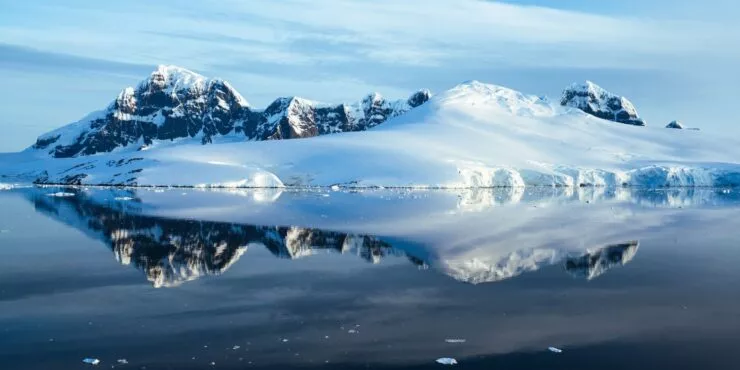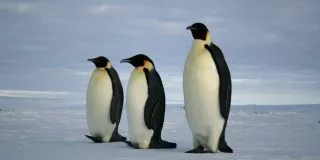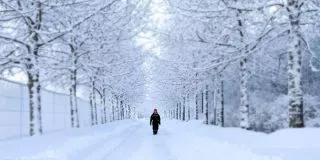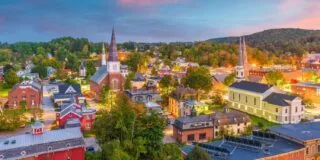Freezing is one word that might come into your mind when you hear Antarctica, and you’re not wrong because, after all, it is the coldest place on Earth!
But if you think that the temperature in Antarctica is the only thing that will make you feel chilly, these interesting facts might just send shivers down your spine.
With that said, here are 60 fun & interesting facts about Antarctica that you probably didn’t know.
Antarctica is the only continent with no permanent residents or citizens. People living there, like scientists, only stay for around three to six months for research purposes.
There are no polar bears in Antarctica, only in the Arctic, because no bears resided or survived at the South Pole after Pangea broke apart.
Most people staying in Antarctica are Christians, having more than 70% of the continent’s population. Following that is a combination of atheists and people who chose not to disclose their religion.
The Drake Passage is a waterway in Antarctica that connects the Pacific and Atlantic oceans. This waterway is known for its violent storms and strong winds, claiming the lives of numerous sailors. It’s named after Sir Francis Drake, an English explorer whose ships were used when the connection between both oceans was discovered.
Antarctica was part of Gondwana, a supercontinent that came before the Pangea. The supercontinent included South America, Arabian Peninsula, Africa, Madagascar, India, and Australia.
The Greek word for Antarctica is “antarktikos,” which means the opposite of the Arctic.
The Antarctic desert is the largest in the world, double the size of the Sahara Desert. The polar environment is considered a polar desert since it rarely rains or snows there.
There’s a part of Antarctica that looks like a blood waterfall. It’s called Blood Falls, and the Taylor Glacier’s trapped saltwater lake is responsible for it. The lake is rich in iron that turns red when it flows outside as it reacts with oxygen.
Due to the cold temperature, most plants, like trees or bushes, can’t survive in Antarctica. But some exceptions are mosses, liverworts, and two native flowering plants: Antarctic hair grass and Antarctic pearlwort.
South of Sanity is the only movie to be filmed entirely in Antarctica. It was a low-budget film released in 2012. The director of this unpopular yet historical film is Kirk Watson, a mountaineering expert who works at Halley Research Station.
There were 11 babies intentionally born in Antarctica because of Argentina and Chile’s competition for a territorial claim. Both countries did it by sending pregnant women to their research stations. But, of course, their efforts went to waste due to the Antarctic Treaty.
Silvia Morella de Palma gave birth to Emilio Marcos Palma in 1978 at Esperanza Base, making Emilio the first person to be born in Antarctica.
Antarctica Day is celebrated every December 1st to commemorate the signing of the Antarctic Treaty.
The Antarctic Treaty was signed in 1959 by twelve countries in Washington, D.C. It’s an agreement that the continent should only be used for peaceful purposes, forbidding the establishment of military bases and testing of military weapons, unless military equipment will be used for scientific research.
One of the agreements of the Antarctic Treaty System is to protect the Antarctic environment. This agreement prevents mining and leaving any waste on the continent.
There are 70 permanent research stations in Antarctica. The largest one is McMurdo Station, which has the capability of having thousands of residents. The U.S. built it in December 1955 for scientific research and the logistics hub of the U.S. Antarctic program.
Research stations in Antarctica have a wastewater treatment plant where poop and other wastewater flow, making it clean so treated water can be brought to the ocean – solid wastes are sent back to the U.S. through cargo ships.
The poop of Antarctic penguins is called “guano.” It contains high amounts of nitrous oxide, famously known as laughing gas due to its ability to create a euphoric effect when inhaled.
Doctors staying in Australian Antarctic research stations during winter are required to remove their appendixes. It’s because there’s only one doctor per station, and they can’t afford to be in life-threatening situations wherein evacuation is unlikely.
Antarctic fishes have “antifreeze” proteins that make them survive Antarctica’s freezing water.
Adolf Hitler sent an expedition to Antarctica to harvest whale oil, essential for making margarine and lubricating weapons.
Antarctica wasn’t covered in ice for more than 100 million years. Paleontologists found fossils, including frogs, birds, and even dinosaurs discovered on the continent.
McMurdo station used to have a small nuclear reactor called PM-3A from 1961 to 1972. Its nickname was “Nukey Poo” because of how often it malfunctioned and leaked. The U.S. Navy shut it down in September 1972 due to its expensive maintenance and environmental impact.
There were 16,500 condoms sent to Antarctica in 2008. They’re free of charge and can be seen in numerous bathrooms of McMurdo Station. Condoms were shipped to the research station to prevent pregnancy, as McMurdo Station’s clinics have limited capabilities for handling pregnant women. This is also why a pregnancy test is required for a woman before going to Antarctica.
There are months when the sun doesn’t rise in Antarctica. It happens during Antarctica’s winter as it’s tilted away from the sun, which prevents the sun from rising there. And the sun doesn’t set when it’s summer in Antarctica because the continent is now tilted towards the sun.
Sharks can’t survive in Antarctica because of the cold temperatures. The only exception was a type of sand tiger shark called striatolamia macrota, which are now extinct, as its teeth were discovered on Seymour Island – an ice-free island in Antarctica.
People who worked in Antarctica were rewarded with a medal. An example is the Antarctica Service Medal, which the U.S. Congress made in 1960. As of October 1, 2008, members of the U.S. armed forces and even U.S. citizens can get it by working in the polar environment for at least ten days under the U.S. Antarctic Program.
British people working in Antarctica for more than 365 days are still liable to pay income tax. It’s called British Antarctic Territory (BAT) Tax, which has a 7% tax rate on their monthly salary.
Making beer in Australian Antarctic research stations is banned. However, researchers can still have a good time as long as they follow the alcohol policy made by the Australian Antarctic Division (AAD). But during the 1990s and 2000s, a man named Ian McLean, whose work in Antarctica was to take care of satellite equipment, suddenly became a brewer in numerous research stations – even dubbing him the “brewer master.”
People who’ve stayed in Antarctica have a saying: If you sweat, you die. It’s because sweating causes hypothermia in polar environments like Antarctica. Although, this deadly problem can be prevented by regulating body temperature by properly layering clothes.
On September 19, 2022, Elon Musk announced that his satellite internet provider, Starlink, can be accessed on all continents – including Antarctica.
“Heroic Age of Antarctic Exploration” is a term used for the 25 years (between 1897 and 1922) of global focus on the scientific and geographical investigation of Antarctica. This curiosity led to numerous voyages from different nations that resulted in inspiring survival stories… but also painful memories of death.
Two men had similar names that went to Antarctica. The first is John Davis, an American sealer and explorer who was considered the first man to step onto Antarctic land in 1821. The other is John King Davis, one of the Australasian Antarctic Expedition (AAE) captains known for making wise decisions when commanding a ship during dangerous situations.
There are travel companies that allow you to explore Antarctica. Some of the pioneers are Aurora and Quark Expeditions, founded in 1991 – the same year the International Association of Antarctica Tour Operators (IAATO) was formed to protect the continent. However, the beginning of tourism in Antarctica dates back to the late 1950s.
The total number of tourists that visited Antarctica from 2017 to 2018 amounted to 51,707, which was a massive increase as there were only 38,478 visitors from 2015 to 2016.
According to a Denmark-based travel booking platform, April to September is the worst time to visit Antarctica due to colder temperatures and having little to no sunlight.
Traveling to Antarctica is so expensive that an Antarctic expedition launched in January 2022 by Antarctica21 was priced around $4,995 to $14,995 USD per person – depending on your chosen itinerary.
John George Bartholomew, a cartographer, was the first to put Antarctica on maps in 1886.
On March 25, 1988, the Balleny Islands in Antarctica experienced an 8.1 magnitude earthquake, which became the strongest earthquake in the continent – that size of an earthquake is enough to make Burj Khalifa collapse.
According to the observation of NASA scientists, the Tohoku earthquake and tsunami in Japan that occurred in March 2011 created new icebergs in Antarctica.
Bárbara Hernández Huerta from Chile holds the world record for the fastest mile swim across the Drake Passage, finishing it in 15 minutes and 3 seconds – she’s known as the Ice Mermaid for her expertise in glacier swimming.
According to researchers, the Antarctic Ocean absorbs more carbon dioxide than it releases. This results in ocean acidification that negatively affects marine life and humans due to a lack of seafood supplies.
There are only two ice sheets in the world, the Antarctic and Greenland ice sheets, and Antarctica has the largest one as it covers 5.3 million square miles.
Airlines avoid Antarctica in their route due to the continent’s whiteouts that can affect a pilot’s visibility. But on October 6, 2021, Qantas Airways flew across Antarctica and the Pacific Ocean. It was a 17-hour and 25-minute non-stop flight from Argentina to Australia, breaking the company’s record for the longest commercial flight in its history.
Antarctica is almost equivalent to the size of the United States and Mexico combined or twice the size of Australia.
According to a study in 2017, there are 138 volcanoes in Antarctica. Most are either dormant or covered in ice sheets, but there are currently two active volcanoes: Mount Erebus and Deception Island.
Numerous Antarctic explorers began discovering plant fossils in the 19th and 20th centuries. One of the earliest to find them was Carl Anton Larsen, a Norwegian whaler and explorer, as he and his members found petrified wood on Seymour Island in 1892.
Norway defeated Britain in the race to Antarctica’s South Pole in 1911. They reached the South Pole on December 14, 1911.
Robert Falcon Scott and his team took a photo with Amundsen’s tent on January 17, 1912, at the South Pole that turned out to be their last photo before meeting death on their way back to the U.K.
Antarctica’s air is one of the cleanest in the world, making it a perfect place for researchers to know how our environment changes due to nature and humans.
About 70,000 killer whales live in Antarctica. They reside in this continent because some of their prey are seals and penguins living in the polar environment.
The sperm whale, southern bottlenose whale, killer whale (orca), and Arnoux’s beaked whale are the four toothed whale species found in Antarctica. It’s also the home of six different species of baleen whales, including the enormous blue whale, fin, southern right whale, sei, minke, and humpback.
South Africa, Australia, New Zealand, Chile, and Argentina are the closest countries to Antarctica.
Antarctica has 70% of Earth’s freshwater frozen in its ice sheet, which can make the sea level rise whenever it melts or collapses. The continent’s ice sheet is also responsible for 90% of Earth’s ice.
In 2013, Prince Harry and teams of wounded military veterans went to Antarctica to raise money and awareness for injured veterans. The expedition was organized by a charity called Walking with the Wounded and was sponsored by companies such as Virgin Money, Glenfiddich, and Helly Hansen.
Metallica went to Antarctica in 2013 to play in a small dome filled with 120 people, consisting of scientists, ship crew, and Coke Zero contest winners from Latin America. This event made them the first band to play on all seven continents.
The first band to perform in Antarctica was Nunatak in 2007, for an event called Live Earth that raises awareness for climate change. It was a sold-out concert with an audience of 17 people, the total population of the British Antarctic Survey’s Rothera Research Station.
Anytime Fitness opened a gym in Antarctica on January 7, 2020. Their publicity stunt made them the first franchise company to reach all seven continents. They were able to do it with the help of Antarctica 21 – a tour operator dedicated to Antarctic explorers.
Endurance, a ship led by Ernest Shackelton that sank in 1915, was found after 106 years. The Endurance22 expedition team discovered it on March 9, 2022.
The Antarctic Ice Marathon is held annually, and the 26.2-mile course is prepared in advance with snowmobile support, aid stations, and medical personnel.
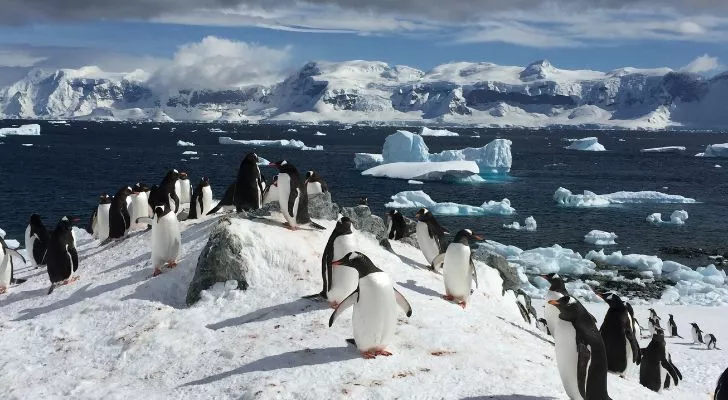
We’ve reached the end of these Antarctica facts; we hope you learned something new about the coldest & most beautiful place on Earth!
From fossils that indicate Antarctica wasn’t always frozen, to a glacier that looks like a blood waterfall, the continent proves that we still have a lot to learn about our planet.
